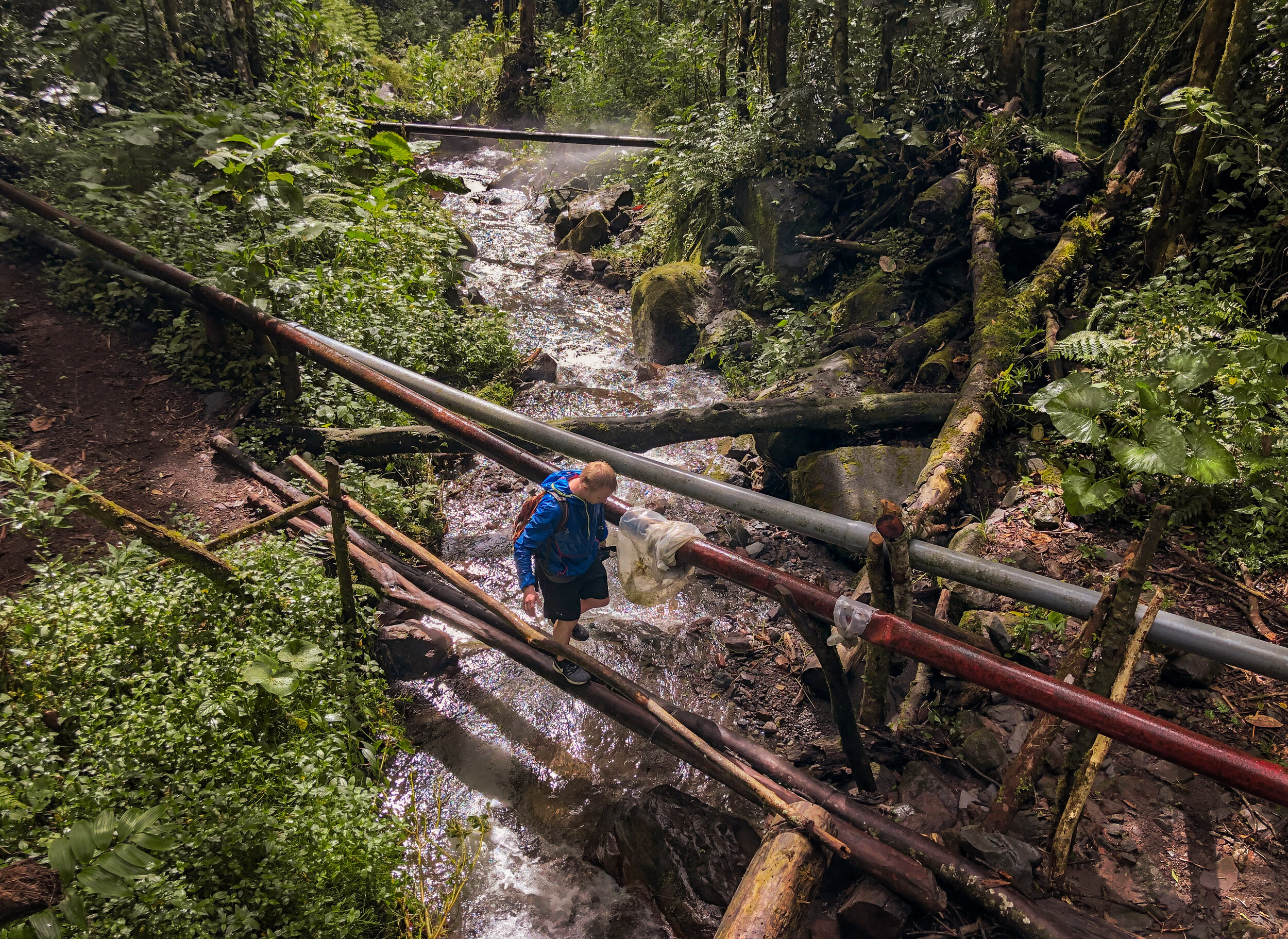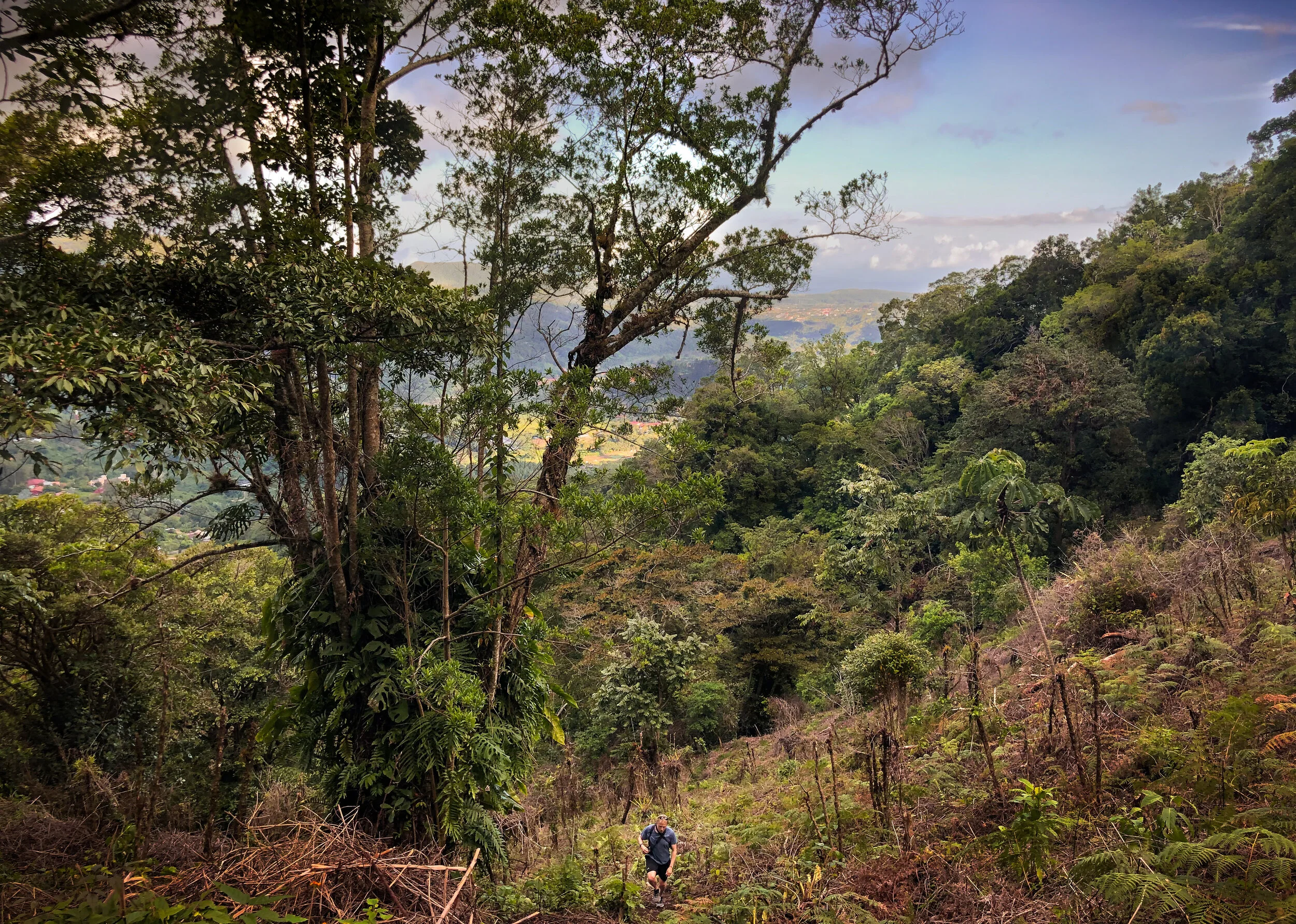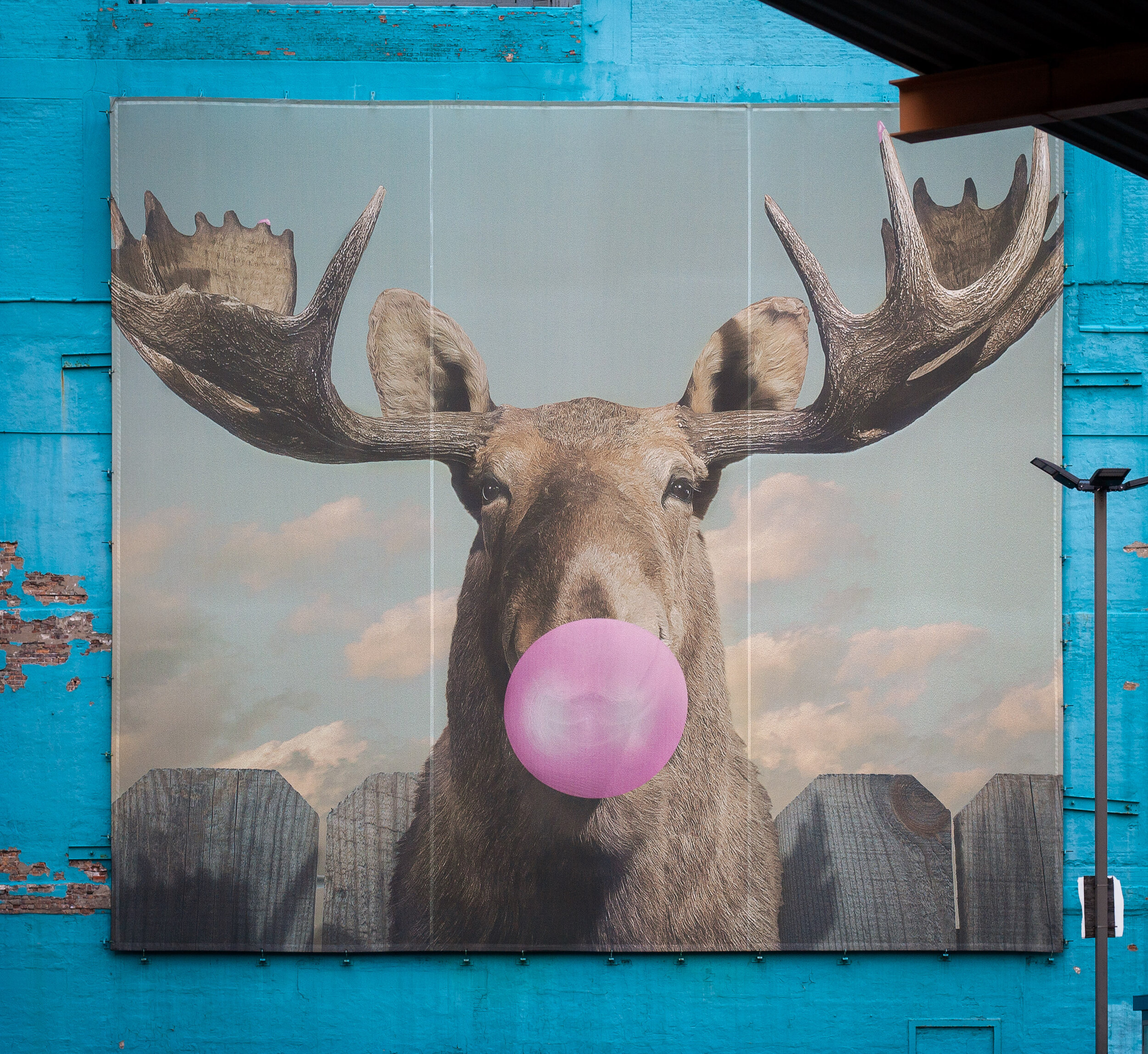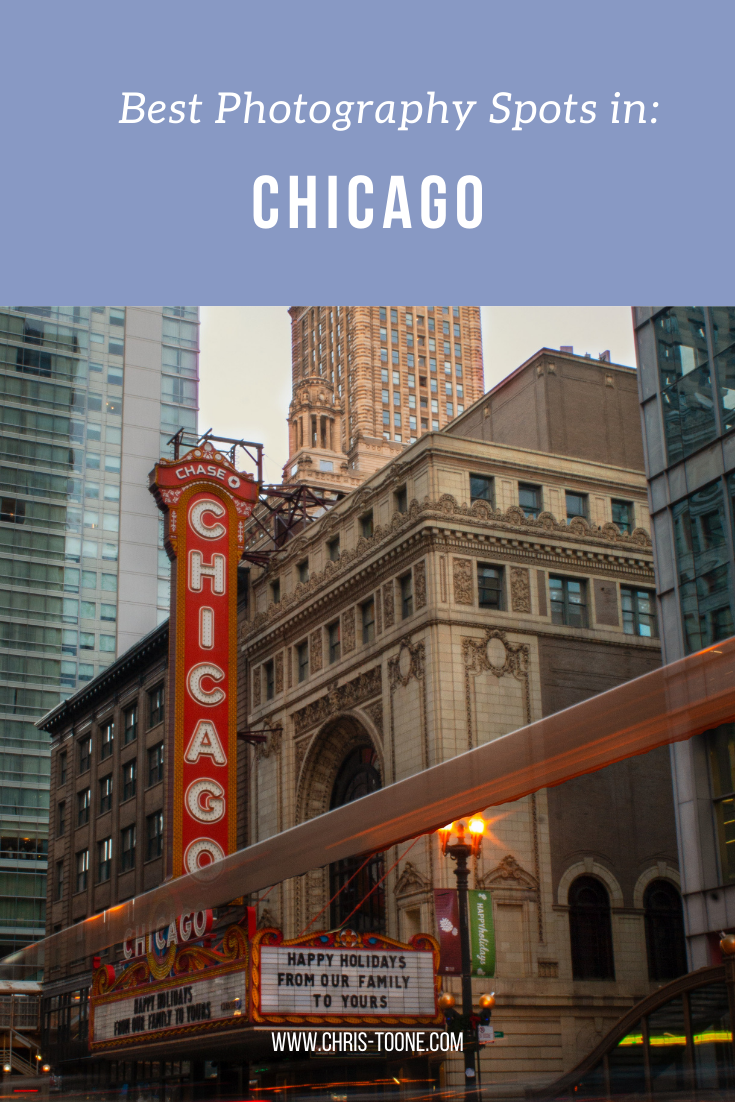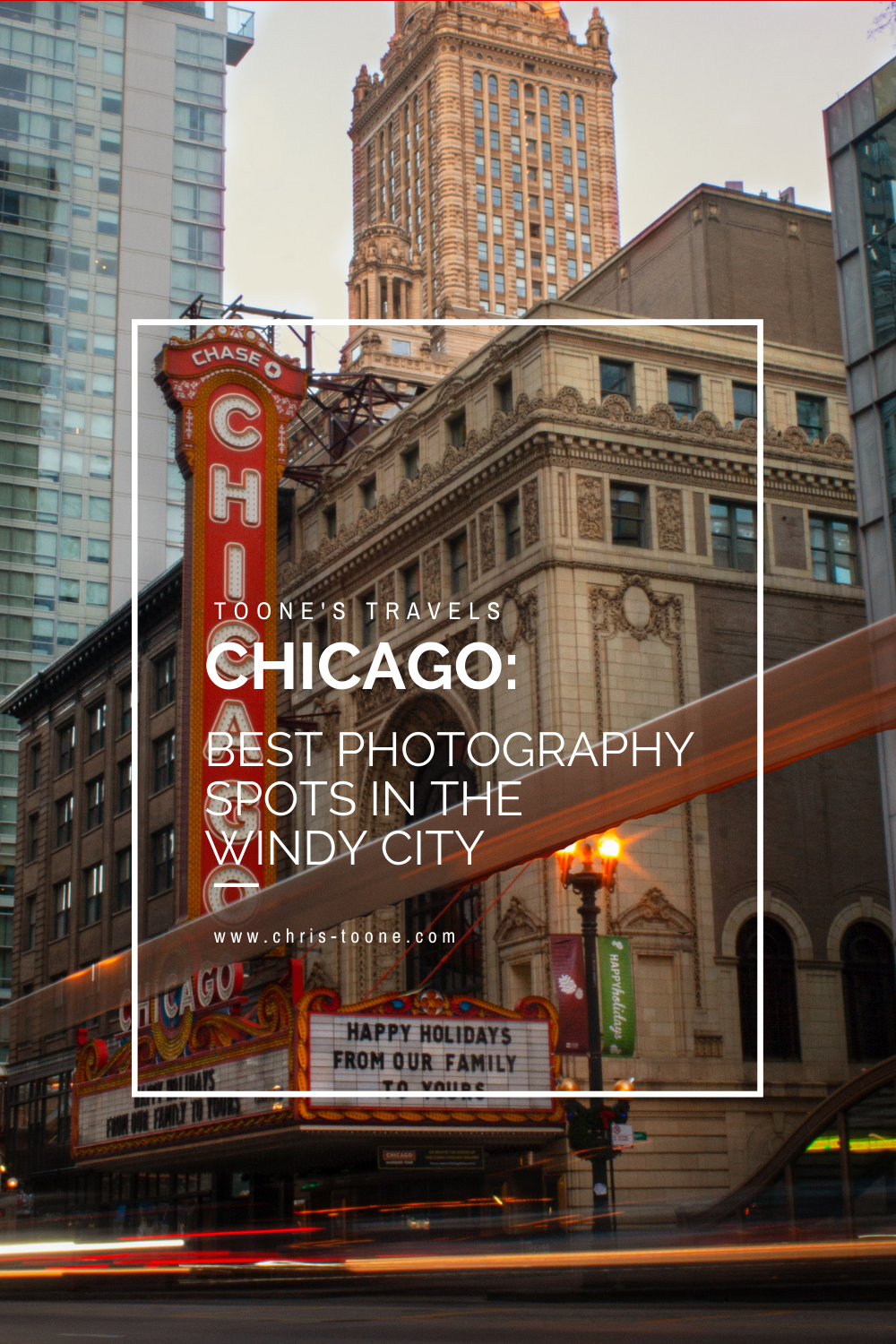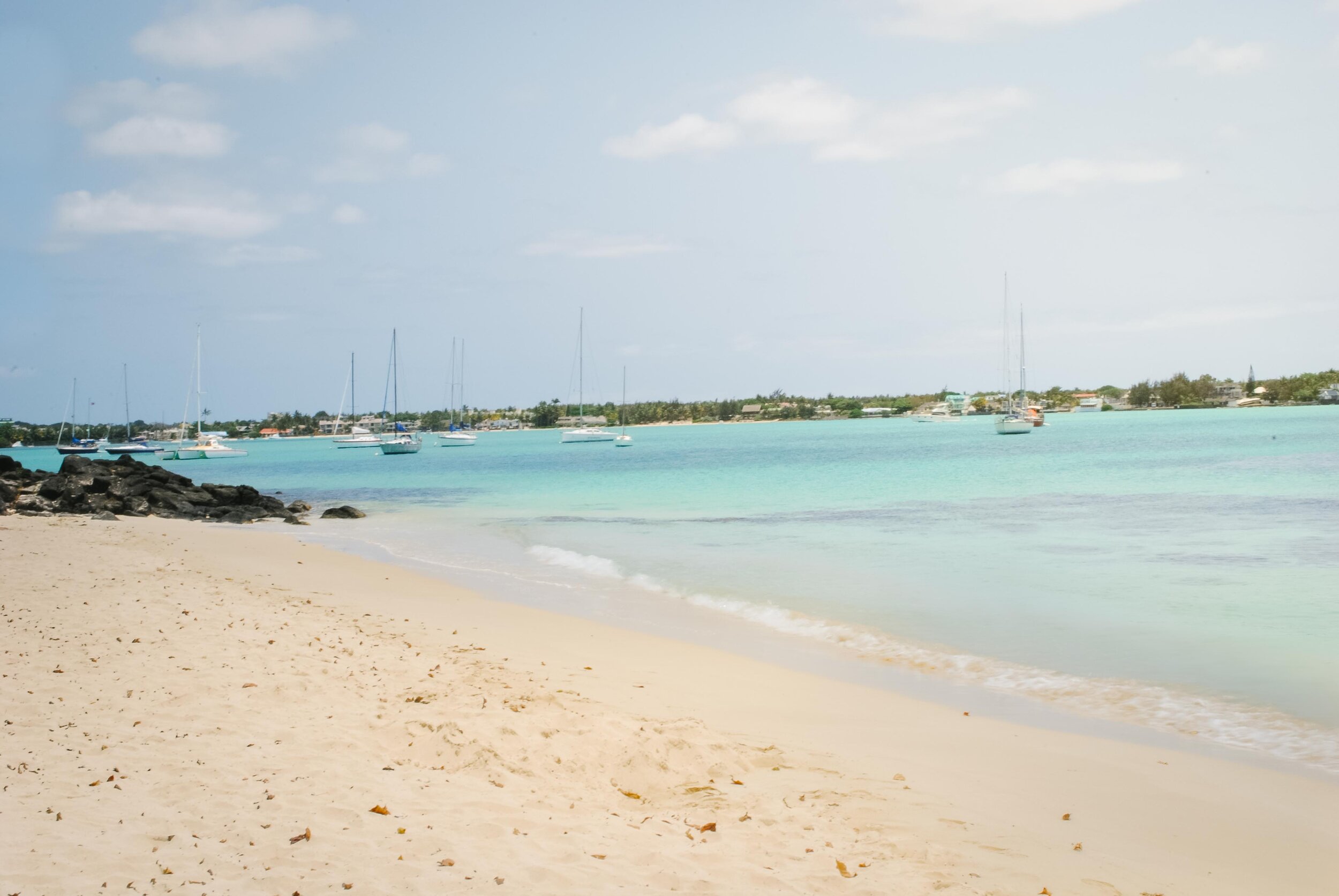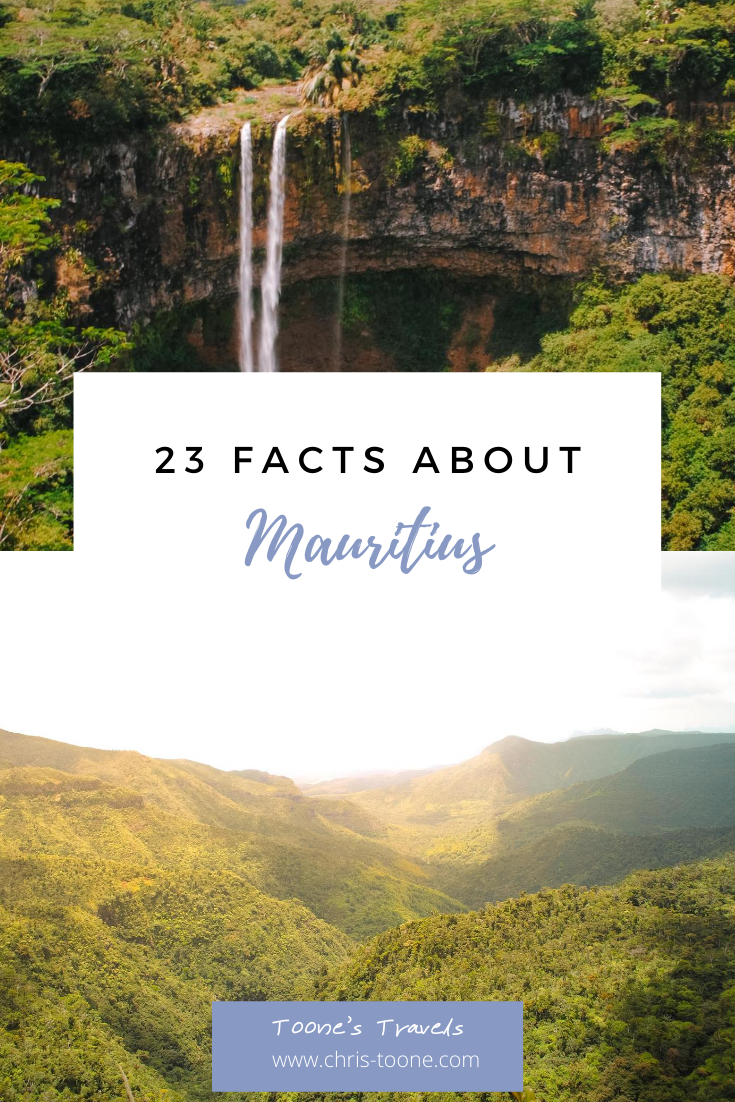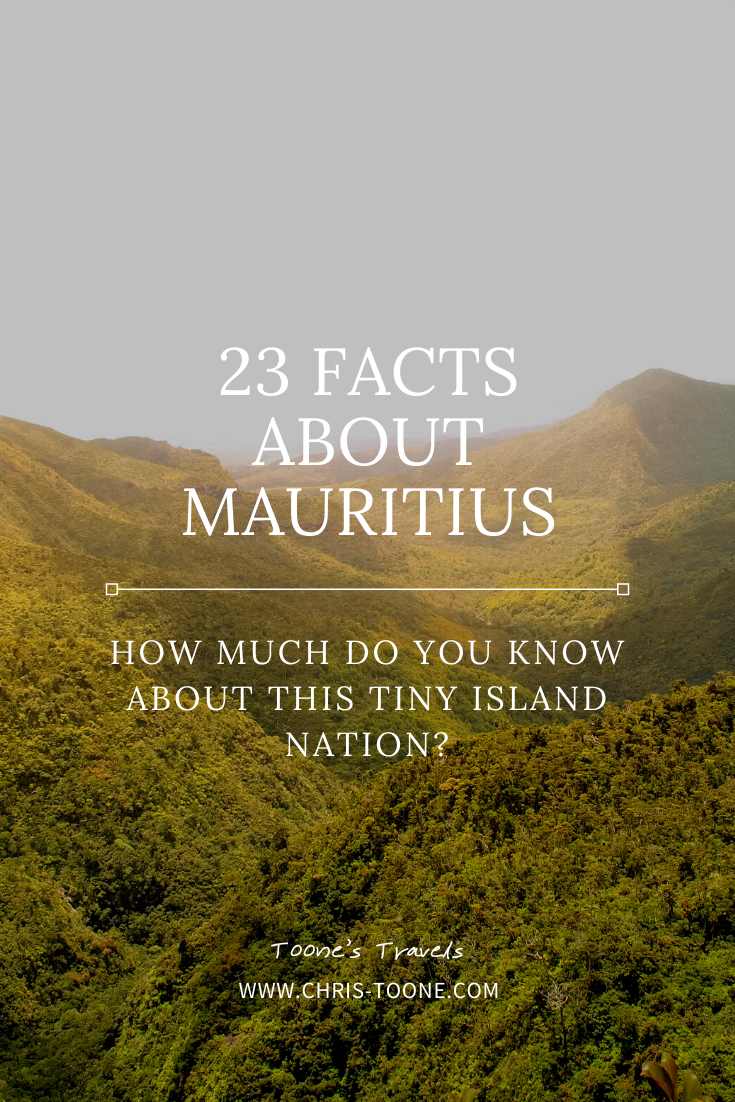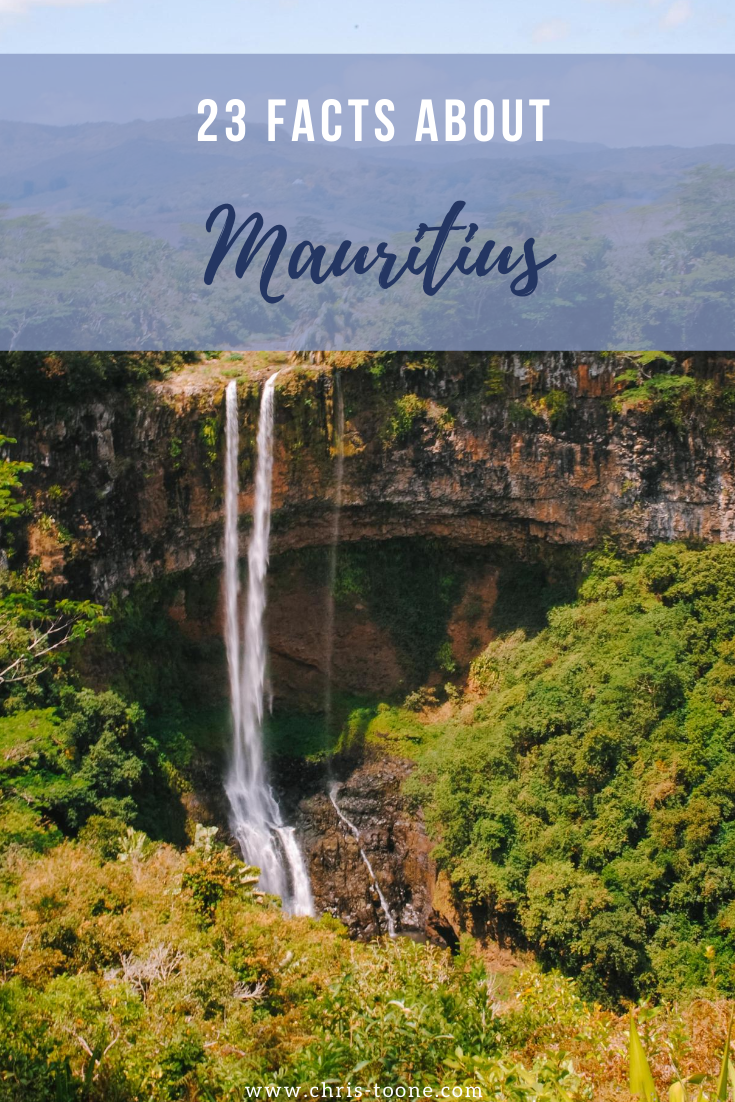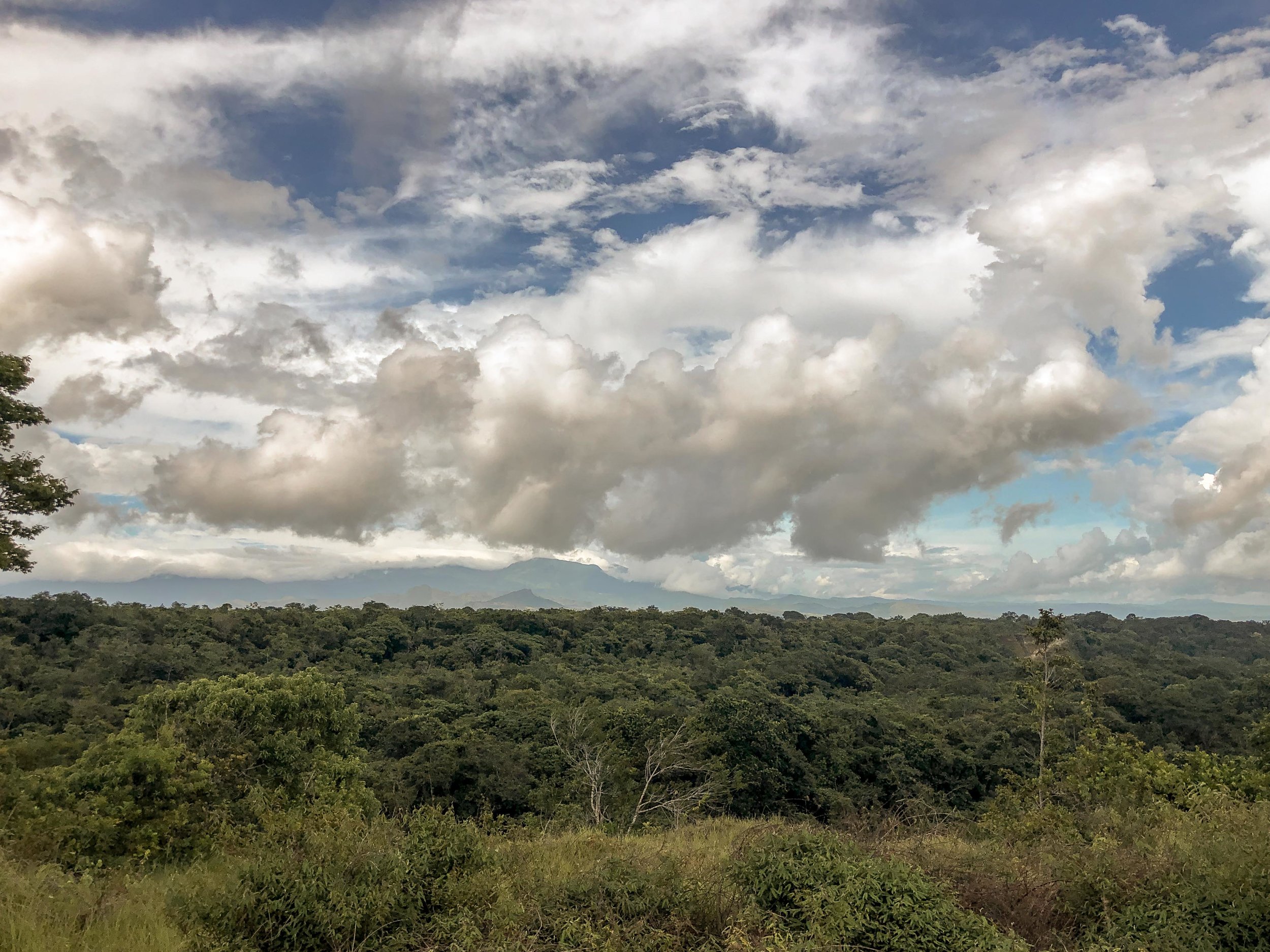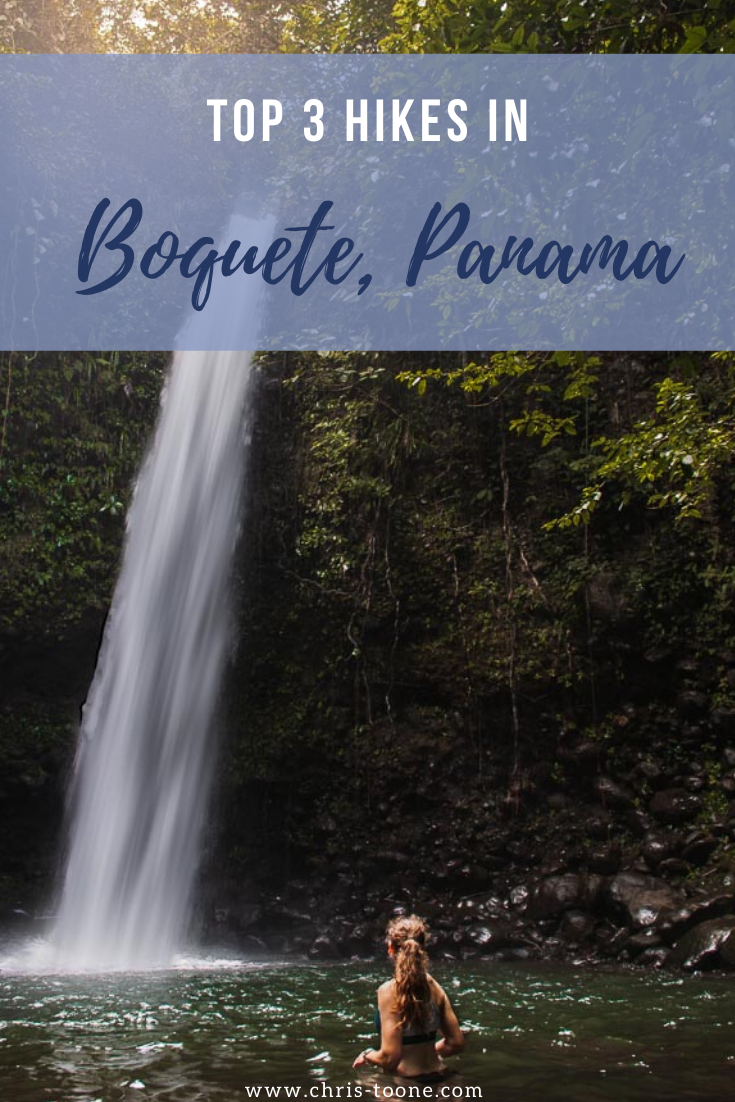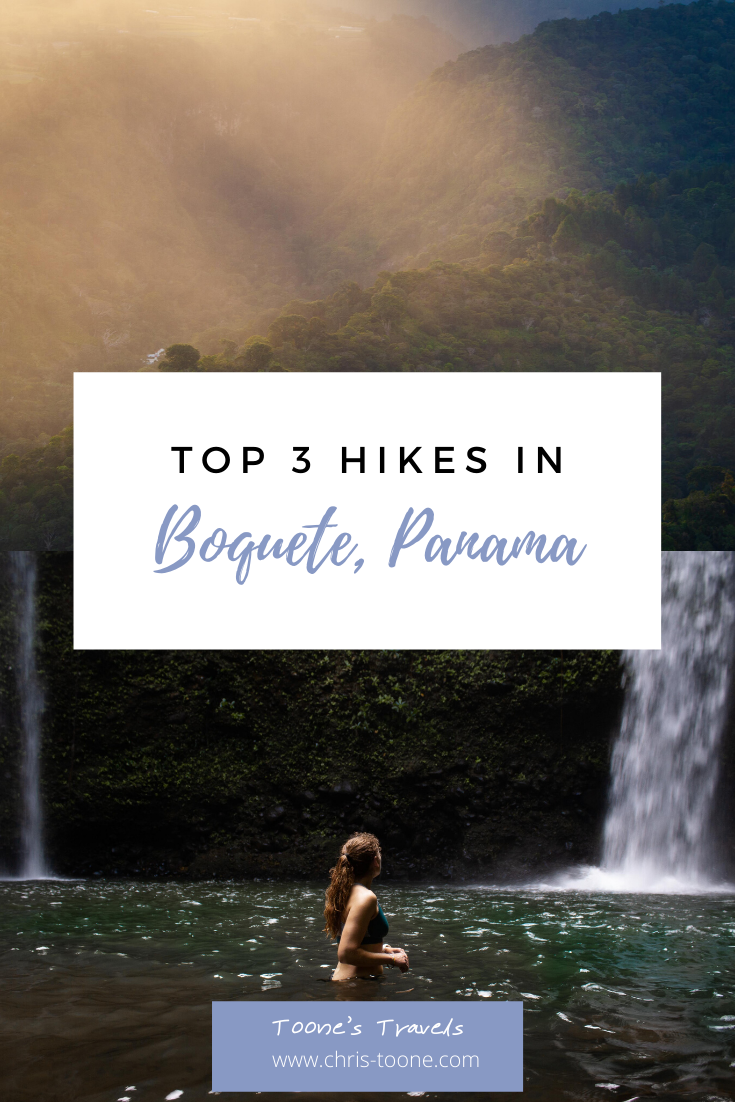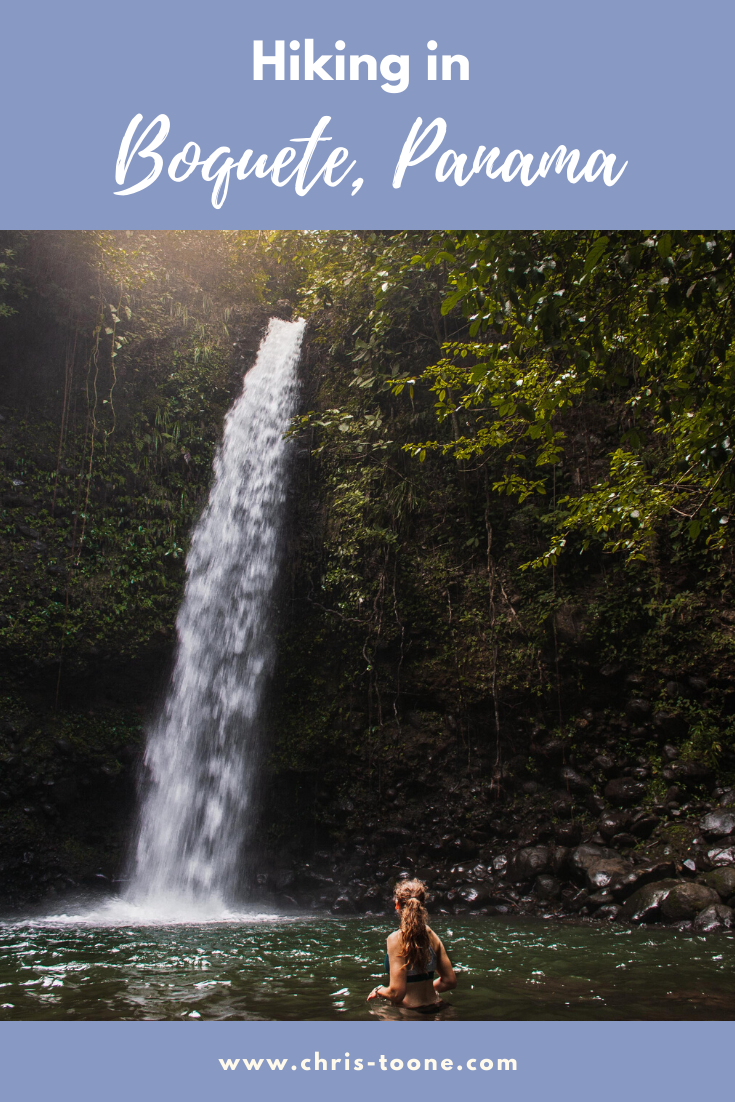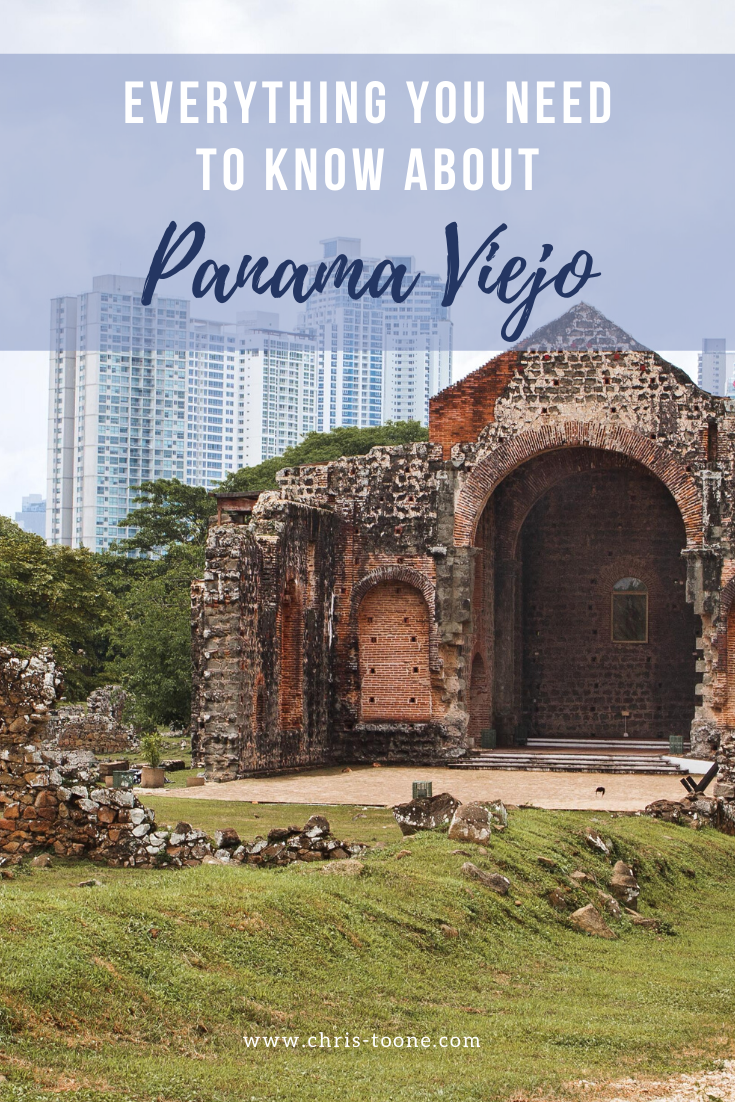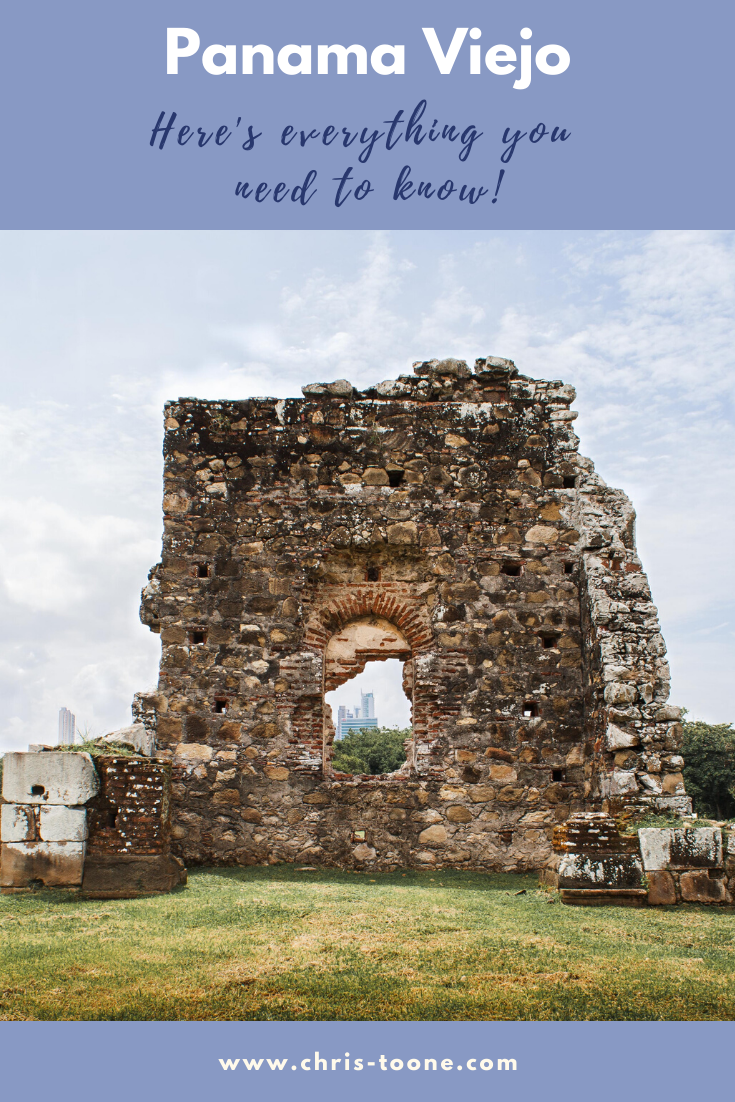The Ultimate 3-day Itinerary in Boquete, Panama: Experience cloud forests, coffee, and more!
From ominous cloud forests and lush jungle vegetation to the world’s best coffee bean, Boquete is a magical place nestled within the Chiriquí Highlands of Panama that an adventurer’s dream. Here’s a 3-day itinerary to help you plan your next trip!
First and foremost, let me take a moment to answer the most important question: is three days enough in Boquete?
No.
There’s such a high volume of places to explore and things to experience that it’d be easy to spend weeks, if not a month here. This guide will at least help you to scratch the surface and be well on your way to creating the perfect Boquete, Panama itinerary that works for you!
BACKGROUND
Boquete is a small town located in western Panama about 40 miles from the border with Costa Rica. It’s a place popular amongst travelers and ex-pats alike for the abundance of wildlife, cloud forests, and globally acclaimed coffee beans.
Situated along the Caldera River and surrounded by the Chiquiri highlands, the area offers incredible hiking and outdoor adventures for any age including prime viewing of the elusive Quetzal, Panama’s most popular bird. Visitors will find a unique concoction of both Panamanian culture and cuisine mixed with the ex-pat influence from around the world.
If hiking isn’t your thing, no problem! Visit a coffee farm to learn how Boquete cultivates the world’s most expensive bean, soak up the cloud forest views by driving the Bajo Mano Loop, and even take a chocolate-making class in town. Either way, a trip to Boquete is well worth it!
GETTING THERE
There are three main ways to get to Boquete: car, bus, and plane. Let’s break it down:
Renting a car and driving from Panama City to Boquete will take around 6.5 hours via Route 1. It’s a scenic drive along the highway and allows travelers to take their time, stopping in towns like Santiago and David as they go.
This was the mode of transportation I opted for and although renting a car in Panama is notoriously confusing, it was liberating to have the freedom on the road. Having a car while in Boquete also made the more remote hiking trails more accessible.
The most cost-effective option is via bus. There are direct routes from Panama City to David, in which you’ll then need to transfer to further reach Boquete. Generally speaking, this is what you can expect:
Panama City to David – around 8 hours and $15.75
David to Boquete – 1 hour and $1.75
The quickest and also the most expensive way is via flight from Panama City to David before renting a car or hopping on the local bus. The flight time is around 40min and can cost between $85-$150.
To read more about renting a car in Panama, check out this post!
WHERE TO STAY
Thanks to the ex-pat community, there is a wide range of accommodation available from hostels to bed and breakfasts or fully furnished Airbnb rentals!
Sub - $50
$50-$100
$100+
Hotel Finca Lerida Coffee Estate
During this three-day trip, I opted for an Airbnb at Villa Cascada Boquete and could not have had a better experience! The living space is detached from the main home for complete privacy, including entry, and comes complete with a secluded and relaxing koi pond off the back patio. The location is an easy walk to downtown Boquete and made for the perfect home base.
3-DAY ITINERARY
There are a few quick notes to make regarding the itinerary below.
To start with, I tend to travel as most cost-effectively as possible. Often I opt to save money on fancy meals and put those funds towards more experiences. Also, anyone will tell you that I plan very little and explore a lot. Sometimes it works out and sometimes it leaves me wanting more, but it's a risk I'm willing to take.
With these points in mind, let’s dive into a basic, three-day itinerary in Boquete, Panama!
DAY 1:
Breakfast: I opted for a quick and easy breakfast at the Airbnb before packing snacks and heading to the cloud forest for a morning hike.
Two of the best grocery stores to stock up on easy meals and snacks are Super Barú Boquete and Romero Boquete.
Pipeline Trail: The Boquete area has such an abundance of trails to explore that it can be quite overwhelming to choose one to do, especially if on a limited time. This was my first experience hiking in the jungle, so I chose the Pipeline Trail as it’s well known, clearly marked, and relatively flat. Due to the popularity, it’s best to wake up early and start the trek first thing in the morning.
This hike takes visitors through the lush jungle along a narrow path and is commonly known as one of the best places in town to view the Quetzal bird. Along the trail lies a massive 1,000-year-old tree, shooting straight up into the jungle canopy.
The gem of this 3.8-mile loop hike is the cascading waterfall that provides the necessary mist to cool off and feel energized for the trek back to the trailhead.
Note: The locals regulate the trail and there is a 5 USD entrance fee per person, as well as a required sign-in/out. As you walk up from the “Welcome” sign at the road, a small hut will be on the left before you enter the jungle.
Lunch: After being energized by the Pipeline Trail, I opted for a quick lunch/rest back at the Airbnb before setting out on another adventure.
Choclón Waterfall: This was an adventure for the ages. As I was researching places to visit in Boquete, I came across a picture of these stunning twin waterfalls and knew I needed to visit. The only problem was there was no location listed.
Armed with loose GPS coordinates and blurry Google Satellite images of the area, I set off to see if I could make it happen.
After hours of trying, re-trying, almost giving up, and then trying yet again (you can read more about the full adventure by clicking here), I finally found the correct path that led to the magical Choclón Waterfall.
The path itself was overgrown, narrow, and isolated, but the short hike down to the riverbed beyond worth the effort!
Dinner: After expending so much energy on the hiking trails throughout the day, it was a stay-in and rest type of night for dinner, only stepping foot outside to reward myself with a delicious dessert from Gelateria La Ghiotta, a frequent stop on my trip.
DAY 2:
Breakfast: Still feeling the effects of a day full of exploring in the sun and humidity, day 2 was more about exploring the downtown Boquete area. After several local recommendations, I settled on a place called Olga’s for breakfast.
Situated in her own home and greeting each customer with a hug and a kiss on the cheek, Olga’s food was by far the best I experienced on my Panamanian adventure!
Daytime Adventures:
La Viuda del Cafe
The Boquete area is well known around the world for cultivating the Geisha coffee bean. With a gentle wildflower aroma, a bag of these can go for $600 and just a cup can cost $64 in Dubai!
Luckily by being at the source it’s much more affordable. La Viuda del Café is a boutique coffee shop that translates literally as “the coffee window.” Here a cup of Geisha coffee costs only $4!
Is the delectable bean that good? Yes, it is, my friends.
Pastelería Alemana
Located south of downtown Boquete and along Route 41 lays Pastelería Alemana.
A small German pastry shop, the outdoor seating area makes for an odd yet perfect experience, eating a scrumptious apple strudel while gazing off at the remote jungle in the distance.
Faro Panama
I had passed this attraction on the drive into town from Panama City and was completely taken aback. How does a giant lighthouse make its way to such a remote part of the country?
Long story short, this family fun center opened just before my arrival in Boquete and I was the only car in the parking lot. It was an ominous feeling to see an empty complex and have the staff so surprised to see a visitor, but the top of the lighthouse provided unparalleled 360-degree views of the area, including Volcan Barú.
The cost was 4.25 USD per person.
Café Ruiz
To fuel up for an evening hike, a quick stop at the Café Ruiz coffee farm was necessary. Nestled out of town and amongst lush flora, the tasting flight of various local coffees was a needed afternoon jolt.
Café Ruiz also offers some of the shorter/cheaper coffee tours in town. I tried to sign up for one but unfortunately, it was full. Lesson learned; book in advance!
Ready to learn more about Panama’s coffee? Check out this tour from Get Your Guide!
La Piedra de Lino
Translated as “the rock of Lino,” this short yet steep hike offers some of the most spectacular views over Boquete and the surrounding cloud forests.
Climbing 1000+ feet in just over 1.5 miles, La Piedra de Lino is a leg burner and not for the faint of heart, but the payout at the top is worth it.
The path can get slippery, especially after a good rainfall. Be sure to wear shoes with good tread and move slowly.
Dinner: Sabrasón
A cafeteria-style buffet full of Panamanian cuisine and incredibly cheap, Sabrasón made for a quick and easy meal after an exhausting and fulfilling hike up La Piedra de Lino.
Dessert: Gelateria La Ghiotta
DAY 3:
Breakfast: Olga’s… again. Enjoying homemade food on the back patio and surrounded by local flora was the perfect way to start the day.
Tuesday Market: If you’re looking to avoid the ex-pat influence, then the Tuesday Market isn’t for you. With that being said, it’s a unique experience in the area as the community congregates to sell local foods and gifts.
Shopping: Finding the right knick-knacks is far cheaper in Boquete than back in Panama City, so before I drove out of town I spent some time wandering up and down the main road while browsing the local selection of blankets, backpacks, and more.
Boquete was a quick stop on a whirlwind trip around Panama and I wish I had been able to spend more time here, but it’s certainly a place that’s high on my list to return to and learn more about.
Questions? Have other ideas for a trip to Boquete? Leave them in the comments below and be sure to check out my other posts about Panama!
Stay safe & happy travels!
Enjoy this post? Pin and share with others!
Best Photography Spots in Chicago: Everywhere you need to go on your next trip to the Windy City
Skip the tourist trail and check out this comprehensive list of incredible spots to photography Chicago. From where to find the best city skyline views to which parking garages best capture the 'L' train, this is a must-have guide before your next trip!
As it turns out, moving to Chicago has been the perfect way to expand my photography skills. With the hustle and bustle of city life, the famous ‘L’ train weaving through the towering buildings, and the glistening shores of Lake Michigan to the east, there’s a unique perspective everywhere you look.
Millennium Park and Michigan Ave are by far the most visited sites in this mid-western hub but trust me when I say there’s so much more to discover.
Here’s a list of the best places to photograph Chicago.
NORTHERLY ISLAND
Northerly Island is a peninsula park along the shores of Lake Michigan that comes complete with city skyline views, including the iconic Soldier Field.
Enjoy the fresh air and greenery as you combine your skilled nature shots with that of urban life.
Fun Fact: The 5-acre lagoon is home to many of Illinois’ wildlife, including monarch butterflies and heron.
Getting There: Red, orange, and green line trains to Roosevelt & walk from there
NORTH AVE. BEACH
Located in Lincoln Park, this popular beach offers some of the best skyline scenery in the entire city. Walk the jetty, stick your toes in the sand, and snap some shots as daily life in Chicago moves all around you.
Pro Tip: This is location is adjacent to the Lincoln Park Boardwalk (below), so it’s easy to combine the two shoots.
Fun Fact: North Avenue Beach came into existence from a multi-million project in the 1930s that was partially funded by President Roosevelt’s New Deal. The beach itself is an extension of an old landfill’s narrow path along Lakeshore Drive.
Getting There: Red, brown, or purple express lines to Fullerton & walk towards Lincoln Park
North Ave. Beach in Chicago, IL
ORLEANS ST. BRIDGE
The most popular way to take advantage of this location is to shoot towards the Wells St. Bridge. This is one of my favorite scenes in the city that perfectly encapsulates life in Chicago; boats cruising along the river below, the brown line trains traversing across the river and stunning architecture rising high towards the sky.
A unique feature of Chicago is that the city is constructed in a way that each building seems to command space of its own, demanding attention as an independent masterpiece. This location perfectly captures that.
Pro Tip: Shooting towards the Wells St. Bridge is great, but don’t forget to turn around and check out the trains coming across the Lake St. Bridge as well.
Fun Fact: The two leaves of the Wells St. Bridge were built offsite and then transported via the Chicago River for installation.
Getting There: Blue, orange, pink, green, brown, and purple express lines to Clark/Lake or brown/purple line to Merchandise Mart
Downtown Chicago, IL
WELLS KINZIE GARAGE
One of my favorite parts of living in the city is finding unique angles to capture the famed ‘L’ train. There’s no better shot than the S-curve in the downtown loop.
Ride the elevator to the top of the Mart Parc Garage at the corner of Wells and Kinzie and watch the trains maneuver through the city’s infrastructure.
Remember: each level of the garage offers a different perspective of the tracks. Be sure to spend some time exploring to find what works best for you!
Fun Fact: In 2014, the “L” train was fourth in the nation for total route length at 102.8 miles.
Getting There: Brown and purple express lines to Merchandise Mart
‘L’ Train in Chicago, IL
437 N. ORLEANS
For the lesser-known view of the S-curve, head to the parking garage located at 437 N. Orleans. The top-level shows the trains as they head to/from the Merchandise Mart CTA station.
Located near the Orleans St. Bridge (above), this makes for a great day of chasing trains.
Pro Tip: For the symmetry enthusiasts, take note of the Assumption Catholic Church steeple against the red brick backdrop.
Fun Fact: The oldest sections of the “L” train began operations in 1892, making it the country’s second-oldest rapid transit system behind New York City’s elevated rail system.
Getting There: Brown or purple lines to Merchandise Mart
‘L’ Train as seen from 437 N. Orleans in Chicago
Need more ideas? Check out this list of curated tours!
PING TOM MEMORIAL PARK
This is the first park I visited after moving to Chicago and it remains at the top of my favorites.
Located in the Chinatown district, this is the perfect place to stock up on some warm buns and pastries, walk along the river, and shoot the city skyline. The boardwalk with the ornate rails helps to create some appealing leading lines.
Pro Tip: Ping Tom Memorial Park is commonly known as one of the best places to watch trains. Amtrak frequently crosses the bridge at the southern edge of the pathway while the CTA trains and freighters flank it to the east.
Fun Fact: This 17.4-acre park was originally the site of a Chicago and Western Indiana Railroad yard. The area began its transformation into a green space in 1998.
Getting There: Red line trains to Roosevelt or green line to Cermak-McCormick Place
Downtown Chicago as seen from Ping Tom Memorial Park
18th STREET BRIDGE
Another spectacular city skyline view is on the 18th Street Bridge, located just above Ping Tom Memorial Park. Point the camera up the South Branch of the Chicago River and behold the Windy City in all its glory.
This is an especially great spot for nightscape photography.
Fun Fact: With a 1967 construction date, the 18th Street Bridge is one of the youngest in all of Chicago.
Getting There: Red line trains to Roosevelt or green line to Cermak-McCormick Place
Chicago skyline as captured from the 18th street bridge in Chicago’s Chinatown
LINCOLN PARK BOARDWALK
The nature boardwalk at Lincoln Park makes for the perfect escape from the busy city streets. The pond is surrounded by prairie-style grass and is full of life with birds, frogs, and fish to name a few.
This is a great place to not only photograph the urban nature scene, but the John Hancock Building as well.
Pro Tip: Combine a visit here with North Ave Beach.
Fun Fact: The Nature Boardwalk acts as a living laboratory for the Urban Wildlife Institute in Chicago as they test new techniques to resolve human-wildlife conflict.
Getting There: Red, brown, or purple express line trains to Fullerton
Lincoln Park, Chicago
200 NORTH CLARK
In a massive city full of high rises, this is the place where you can see straight to the horizon and it feels as though the trains below are riding off into the sunset.
The reflective siding on the garage adds to the unique perspective and helps to create some stunning imagery.
Fun Fact: In 2016, the “L” train had 1,492 cars transporting passengers between 145 stations.
Getting There: Blue, green, pink, orange, brown, and purple express lines to Clark/Lake
The view from the parking garage at 200 N. Clark St. in downtown Chicago
WABASH ARTS CORRIDOR
Commonly referred to as the “living urban canvas” because new pieces are being added on an annual basis, the Wabash Arts Corridor is a unique collection of colorful murals.
Stretching from as far north as Polk and as far south as Roosevelt, this is the perfect place to wander around with your camera. Be sure to check the website for more information, including a walking map of each masterpiece.
One of the most popular works is the Moose Bubblegum Bubble by artist Jacob Watts.
Pro-Tip: Start on the southern edge at Roosevelt and make your way north back into the city’s downtown loop.
Fun Fact: The Wabash Arts Corridor was founded in 2013 by Columbia College and continues to grow into being one of the largest, unique, and accessible art projects in the country.
Getting There: Red, orange, and green line trains to Roosevelt & walk north
Moose Bubblegum Bubble mural by artist Jacob Watts
CHICAGO THEATER
Ok, you caught me. I can feel you rolling your eyes.
The vintage Chicago Theater sign isn’t exactly “off the beaten path”, but it does make for some pretty great long exposure shots and it’s a quick and easy stop on your tour of the city.
Fun Fact: The Chicago Theater was the first large movie palace in America and quickly became the prototype for all others. Constructed in a French Baroque style, look closely at the theater’s exterior to see if you can find the miniature Arc de Triomphe.
Getting There: Pink, green, brown, orange, and purple line express trains to State/Lake
Chicago Theater standing tall in the downtown traffic
The Chicago Theater shines bright in the snow
The truth is you just need to come here yourself and wander around. Each neighborhood, train line, and person has something unique to offer!
Stay safe & happy travels.
Enjoy what you read? Pin this post for later!
23 Facts About Mauritius: How much do you know about this tiny island nation?
From the Dodo bird inspiring a legendary children's novel to a multicolor landscape of volcanic dirt, how many of these facts do you know about the tiny island nation of Mauritius?
Mauritius is a country that has been on my mind a lot lately. As the world slips into the most politically and racially charged climate of my lifetime, I felt it important to highlight this tiny island nation because visiting here opened my eyes to a vital concept; acceptance.
This mindset is so ingrained in Mauritian way of life that the country is often referred to as a model for religious tolerance.
I’ll be the first to admit that as a 19-year-old traveling to this small slice of paradise off the coast of Madagascar with Semester at Sea, I knew next to nothing about the place.
So, other than what I just told you about their peaceful way of life, what about you? How much do you know about Mauritius?
Here are 23 facts to help paint a picture of what this country is all about; a beautiful picture at that!
1. The entire island of Mauritius is just 2040 square-kilometres
This makes it the world’s 181st largest nation in the world. The country is 45km wide and 65km long (CIA World Fact Book).
2. Mauritius is home to the Seven Colors of Earth
A popular tourist destination in Chamarel, these dunes of dirt contain a mix of colors that can be traced back to several volcanic eruptions, each that cooled at their own rate.
Seven Colors of the Earth | Mauritius
3. Three countries had control of the island prior to independence
The Netherlands ruled the land from 1638-1710 followed by France from 1715-1810. Surprise, surprise, in came the British in 1810 to take over and they remained in control of Mauritius until 1968.
4. More than 1.2 million people call this tiny nation home
This leads to a high population density. So high in fact that Mauritius has the highest of such in all of Africa.
5. Mauritius is the only African nation with Hinduism as the dominant religion
The country is 26.3% Roman Catholic, 17.3% Muslim, and 48.5% Hindu.
6. English and French are the most popular languages
You won’t find an official language for the country, but plenty of local Mauritians speak a form of Creole.
7. Mauritius’ flag is made up of four “bands”
Red represents the bloodshed for abolishing slavery and obtaining independence, blue for the vast Indian Ocean, yellow for the bright and shining future that lay ahead, while green symbolizes the lush green vegetation found throughout the island.
8. Mauritius was one of four countries around the world that were NOT engaged in domestic or international conflicts in 2017
Peace, tolerance and acceptance. It’s a concoction that works.
9. Even Mark Twain was rendered speechless by the island’s beauty
“Mauritius was made first and then heaven, and heaven was copied after Mauritius.”
Chamarel Falls, Mauritius
10. The Dodo Bird reigns supreme
Well… not really. The exotic flightless bird is now extinct, but Mauritius was the only known habitat. Due to the island’s lack of predators, the bird eventually lost it’s ability to fly.
11. Mauritius is a proud possessor of the UN Development Programs highest Human Development Index in all of Africa
Between 1990 and 2018, the country’s Human Development Index (HDI) increased from 0.620 to 0.796. The country is currently ranked 66th in the entire world and highest amongst the African continent.
12. More than 1.36 million visitors step foot onto the island each year
This figure significantly outnumbers the local Mauritian population.
13. Mauritius is a volcanic island that first rose 8 million years ago
14. The country does not maintain a standing army
Starting the see the peaceful mindset theme?
15. Port Louis is home to 40% of the population
This capital city was established back in 1736 by the French East Indian Company.
Port Louis, Mauritius
16. It’s widely believed that a stuffed Dodo Bird at the Oxford University Museum of Natural History inspired Lewis Carroll to write Alice in Wonderland
Thank you, Dodo bird.
17. Sugarcane is grown on around 90% of cultivated land in Mauritius
Other major land use includes tea, corn, potatoes, bananas, cattle and goats.
18. Black River Gorges National Park is home to one of the world’s rarest birds
Bird watchers worldwide flock here for a chance to spot the Mauritian Pink Pigeon.
Black River Gorge from above | Mauritius
19. The La Vanille Nature Park boasts an expansive collection of captive-bred giant Aldabra tortoises
The numbers stretch into the thousands and it’s a popular stopping point amongst visitors.
Giant Tortoise | Mauritius
20. Local cuisine is a tasty blend of Creole, Indian, Chinese, and French
Let your imagination (and taste buds) run wild.
21. The Grand Bassin Lake, or Ganga Talao, is Mauritius’ most sacred pilgrimage site for Hindus
A statue of Shiva lives along the lake and Hindus travel here annually to pay their respects.
Grand Bassin Lake, Mauritius
22. Sir Seewoosagur Ramgoolam Botanical Garden is the oldest in the Southern Hemisphere
23. Mauritius has received the World’s Leading Island Destination award not one, not two, but THREE times in the past decade
Between the exotic wildlife, lush mountains, and stunning beaches, it’s actually a mystery as to why they haven’t won it more.
Grand Baie, Mauritius
Ready to plan your trip?
Check out these hand-picked tours!
Enjoy what you read? Pin it for later!
10 Binge Worthy Travel Shows to Keep Your Wanderlust Alive
Quarantined at home but want to keep the travel bug alive? Here are 10 binge worthy shows that will provide that spark you need to keep wondering until we’re able to wander again. Cheers!
If your quarantine is going as well as mine, then congratulations on working your way through the new season of Ozark, a complete re-run of The Office, and all six seasons of Community! Now what?
No, the answer is NOT Tiger King and I’ll be offended if you even so much as think about suggesting it!
In all seriousness, there’s been a lot of creative ways to continue to “travel from home” and all of the streaming services that we’ve been relying on so much make it easier than ever to keep wandering this beautiful planet.
Here’s a list of 10 binge-worthy shows to stimulate your mind and pique your curiosity. Grab the popcorn and let’s dive in; happy travels!
1. THE KINDNESS DIARIES - Netflix
Photo credit: Deseret News
In a world that’s desperate for good news, let’s just cut to the chase: watch The Kindness Diaries on Netflix.
Leon Logothetis ships his vintage Volkswagen Beetle to Alaska and sets out on the journey of a lifetime as he drives from the last frontier all the way down to Ushuaia, Argentina while relying solely on the kindness of strangers.
Throughout his travels, Leon builds connections and, when the timing is right, spreads joy through the gift of opportunity whether it’s seed money for a non-profit, building an addition to a house, and or funding a street musician’s travels for a year.
Sure, there are definitely moments that feel scripted and it’s hard to tell if he actually relied only on the kindness of strangers from start to finish, but that’s not what makes the show so incredible anyways! It’s the adventure, stunning landscapes, and human connection that make it worth the watch.
Get ready to be filled with joy and hope; two things that we can always use more of in life.
2. SOMEBODY FEED PHIL - Netflix
Photo Credit: Eater
Combine a comedian with exotic foods from around the world and what do you get? Somebody Feed Phil!
In all honesty, I too would like a television show that not only allows me to travel the world but also ever-so-bluntly demands to be fed.
Follow Phil Rosenthal, the creator of Everybody Loves Raymond, on his quest for total enlightenment through food.
Ok, that description might be a bit much, but he does seek out some delicious destinations! Chowing down on crawfish in New Orleans, exploring the floating markets of Bangkok, and re-connecting with his heritage in Tel Aviv are just a few of his adventures.
It’s a far cry from the strict street food diet I so often follow during travels of my own, but it’s a great show to learn about the various origins of cultural cuisine and how local food scenes are adapting to the changing times.
Season 3, The Third Course, is released on May 29th and I can’t wait to dive in!
3. SAMANTHA BROWN’S PLACES TO LOVE - PBS Online
Photo Credit: Samantha Brown
Some may call it a blast from the past, but the truth is Samantha Brown never left the hearts of travelers and she’s back with a brand new series: Samantha Brown’s Places to Love.
The epitome of a traveler and a master of inclusion, Samantha bridges the oft-ignored gap between being a tourist and connecting with local culture on a deeper level.
Learn about the chicken & beer fad in South Korea, dip into the famed hot baths in Budapest, or start to plan your next adventure stateside. Whatever your budget, the show brings a variety of destinations, both in the USA and abroad, straight into your home.
All 38 episodes can be streamed for FREE at PBS.org, so bonus points for Samantha Brown!
4. THE AMAZING RACE - Hulu
Photo Credit: The Travel Channel
The Amazing Race is the only reality television show worth watching because it’s less about drama and more about the world.
Of course, the producers do a great job of pitting teams against each as all reality shows do, but it’s much easier to focus on the insane filming locations than the squabbles themselves. It’s doesn’t take much to get hooked as contestants soar high above the Swiss Alps, deliver goods through the hectic streets of India and race to make the next train, leaving nothing but blood, sweat, and a lot of tears behind.
Honestly, it’s the adventure we all dream of having.
The best part? Every single season is streaming on Hulu. That’s right, folks. You can take twenty-nine trips around the world by binging The Amazing Race.
Quarantine seems like the perfect time to begin crafting the next great audition tape and studying up on potential opponents, no?
5. STREET FOOD (ASIA) - Netflix
Photo Credit: Indulgent Eats
The moment I stepped inside of Gwangjang Market in Seoul I could feel the tradition oozing from halls. It wasn’t hectic like other places I’ve been around the world. No one was trying to usher my bum to their stall or waving menus in my face. This was different.
I didn’t know the extent of the untold stories here until Netflix released their Street Food documentary, chronicling the lives of street vendors around the world, including the Gwangjang Market of South Korea.
The nine-part series itself is a masterpiece of familial ties, deep-rooted tradition, and resilience while offering a rare glimpse beyond the packed stalls and smoke-filled air and into the lives of those who make it all happen.
Next time you find yourself engulfing a bowl of steamy pho on the streets of Ho Chi Minh City, pause for a moment to wonder about the story behind it. Chances are you won't be disappointed!
6. ANTHONY BOURDAIN: NO RESERVATIONS - Hulu
Photo Credit: Vietnam Travel
It’s difficult to find the words to adequately express how significantly Anthony Bourdain’s work has impacted my life. His ability to mix wonder with cynicism to create the perspective and humility required to explore and learn about the world is unmatched, especially in the travel television sphere.
He had a good run with CNN’s Parts Unknown and, to be honest, I will gladly ingest any piece of his work, but there’s something special about his original role with No Reservations.
What does this show have that others don’t?
There’s no gaudy facade, rather a travel experience that’s stripped to the bare bones of humanity. It can be difficult to watch at times but to see his reactions and how his experiences affect and ultimately transform him over time is what draws me in.
The rawness of it all makes it relatable and, especially now, we could all use a new lens to understand the world through. No Reservations is the gateway to a fresh perspective.
7. HOUSE HUNTERS INTERNATIONAL - Hulu
Photo Credit: The Toast
Anyone else in the “ex-pat wannabe” club or is it just me?
Either way, House Hunters International is the perfect mindless binge while still satisfying that nagging dream of owning a beach house in the Caribbean. After all, it’s always fun to reminisce about the life that was just one lottery number away from coming true!
It’s inevitable that the lure of living through these lucky travelers will wear off so when the interest levels peak and jealousy and contempt rear their ugly heads (come on Karen, you can paint a wall… just pick house #3 already), there’s only one proper solution: the House Hunters International drinking game.
Let the house tours (and drinks) begin!
8. INTO THE OKAVANGO - Disney+
Photo Credit: Disney+
Into the Okavango is a modern-day exploration film for the ages, spanning four-months, 1,500-miles, and three countries.
The goal? To save the Okavanga Delta, one of Earth’s final wetlands. During my first viewing of the documentary, I was simply in awe of the stunning scenery.
It was certainly enough to get the wanderlust juices flowing and as I closed my eyes that night I couldn’t help but visualize just how much of the world is still untouched.
The second time though, the incredible story of this band of first-time international explorers came to light as they mapped previously unknown landscapes while overcoming a treacherous journey for the greater good and protection of both animals and humans alike.
Truly an inspiring story and a great flick for a family movie night!
9. SALT, FAT, ACID, HEAT - Netflix
Photo Credit: Variety
Sharing the title with her New York Times bestselling book Salt, Fat, Acid, Heat, Samin Nosrat opens the door to the culinary world that often feels closed to travelers that are passing simply passing through.
It’s a must-watch series for culinary artists as Samin travels the world and explores the four basic ingredients to delicious food, but it’s equally enjoyable for those clumsy cooks in the kitchen, such as myself.
My personal favorite is her trip around Japan, exploring the role of salt in two key ingredients of cooking that both have a deep-rooted tradition: miso and soy sauce.
Get ready to learn some new recipes to try during quarantine after binging Salt, Fat, Acid, Heat!
10. BIZARRE FOODS - Hulu
Photo Credit: The Travel
Is it possible to name a show more aptly than this? Probably not, although I suppose The Amazing Race is pretty spot-on, too.
From beef lungs in Panama to tuna eyeballs in Japan and even jellied moose nose in Canada, Andrew Zimmern gives even the most open-minded eaters a run for their money while simultaneously assuring those that are picky that they made the right choice. He’s living proof that the slimy creature you saw squiggling around the market will not kill you and, in all likelihood, will taste delicious.
Whether gearing up for a game of food roulette on my next adventure or simply living vicariously through a man that quite literally gets paid to eat his way around the world, this is a timeless show that’s guaranteed to expose viewers to how vastly different the world can seem through food, yet how interconnected it is through human connection.
Bon appetit!
What’s your go-to travel shows? Are they any great ones that I’ve missed? Let me know in the comments below!
Stay safe, healthy and, above all else, wash your hands! Hope you and your loved ones are safe.
Pin this post!
Top 3 hikes in Boquete, Panama
Drive 480km west of Panama City, Panama and the urban metropolis quickly yields way to a seemingly endless supply of rolling mountains and verdant jungle, eventually leading to an oasis named Boquete. Here are the top 3 hikes when visiting Boquete, Panama!
Drive 480km west of Panama City, Panama and the urban metropolis quickly yields way to a seemingly endless supply of rolling mountains and verdant jungle, eventually leading to an oasis named Boquete.
This mountainous town is nestled within a small valley of the Chiriqui Province and is widely known for being the home of the world’s best coffee. Despite this claim to fame, nature lovers from around the world flock here explore the seemingly endless supply of trails and untouched nature.
Although slightly overrun with ex-pats in recent years, Boquete still offers visitors a calming escape, whether sipping a cup of coffee in the foothills or roaming the numerous dirt paths that wind through the jungle.
My time in Boquete was spent hiking by day and enjoying the rolling thunderstorms as the made way for starry skies at night. To be honest, it was my favorite part of my 8-day trip to Panama and I can’t wait to get back!
Here are the top 3 hikes, plus a few others, for your trip to Boquete, Panama!
PIPELINE TRAIL
The Pipeline Trail in Boquete is aptly named because, well, it follows a pipeline along the river before culminating at a cascading waterfall. It’s one of the more popular trails in the area so the earlier you can go, the better.
Pipeline Trail | Boquete, Panama
What to Expect
The hike itself is relatively flat the entire way, making it easy to be on the lookout for wildlife. AllTrails has it listed as moderate, although I’d say it was certainly a family-friendly jaunt through the jungle.
There were a few spots that may be more difficult for those with limited mobility.
Local villagers regulate the Pipeline Trail. Don’t be surprised when someone appears and asks you to sign in and for 5 USD per person. It’s completely legitimate. Just don’t forget to mark yourself as “returned” on your way back to town!
After paying, we followed the trail as it quickly entered the dense Panamanian jungle. We were on high alert for snakes, howler monkeys, and more, although we had no such luck.
The Pipeline Trail is also widely known as a prime viewing spot for the elusive Quetzal, Panama’s most popular bird.
The Pipeline Trail as it enters the dense jungle in Boquete, Panama
Along the trail, we stumbled upon a 1,000-year-old tree. It stood majestically along the left side of the trail, subtly marked and easy to miss if we hadn't been in search of a convenient spot for a water break.
As we continued on and the dense jungle gave way to a towering canyon, the end was near. In the distance, we could begin to see the waterfall as it cascaded down from high above.
The slow-moving water provided a mist and a refreshing hangout spot to cool off from the humidity we had endured throughout the hike.
An hour and several pictures later, it was time to head back the exact same we had arrived, sign-out, and drive back to town.
When I first arrived in Boquete, I was a bit nervous. I have plenty of experience hiking in the desert and mountains, but very little within the jungle. I found the Pipeline Trail to be a great introductory hike to the region and it gave me the spark of confidence I needed to explore elsewhere!
The 1,000+ year old tree located along the Pipeline Trail in Boquete, Panama
The Facts
Elevation Gain: 1,528 feet
Distance: 3.8 miles out and back
Time: Estimated 2-3 hours depending on pace
Cost: 5 USD per person
Wildlife Viewing: Quetzal birds, snakes, howler monkeys
Getting There
From Boquete, head towards Los Naranjos and follow signs to Bajo Mono. Eventually the road will lead to a sign post that says PIPELINE. Park there and walk up the gravel road. You’ll know that you are in the correct place when you spot a hut to the left. That’s where the trail fee will need to be paid.
CHOCLON WATERFALL
Choclon Waterfall is a lesser-known trail located 40 minutes south of Boquete where twin waterfalls fill a secluded swimming hole at the end of a small gorge.
The path through the jungle is not regularly maintained nor is it distinctly marked, but if you know where you’re going it’s a simple hike.
Swimming at Choclon Waterfall in Boquete, Panama
What to Expect
I originally stumbled upon a picture of Choclon Waterfall while planning my trip down to Panama and immediately decided that it should be added to the itinerary. There was only one problem: Nothing I read told me where to find the trailhead.
Long story short, I was eventually able to track down GPS coordinates to the starting point, marked only by a closed gate and a small path through the barbed wire fencing.
We started the hike by sauntering across an open field before quickly descending to the jungle trail that led to a junction. After much deliberation, Heather and I realized that we had to go up and over a small gate rather than continue following the open trail.
View from the start of the hike before descending into the jungle
After the gate, the path is relatively short and easy to navigate. There were a couple of sections that rain had washed out, so be sure to watch your footing as you hug the wall of the gorge and use the ropes for provided support when available. They’re there for a reason!
A short through the overgrown brush and we had reached the river. Although we waded across the water, take a left instead and head upstream.
We were soon greeted by a magical amphitheater of hanging vines, beautiful waterfalls, and our very own private swimming hole.
We shed our clothes and jumped in as the soft sunlight shone through the canopy above and illuminated the refreshing blue water. It was the perfect ending to a full day of adventure!
To read more about the adventure, visit this post: Chasing Choclon Waterfall
Swimming at Choclon Waterfall in Boquete, Panama
The Facts
Due to the lack of information surrounding Choclon Waterfall, here’s what I can offer:
Elevation Gain: Unknown, but remember that it is a gorge trail, so the ascent will occur on the way back to the trailhead
Distance: Unknown
Time: 30min from trailhead
Cost: Free
Wildlife Viewing: Poison dart frogs, various birds and snakes
Getting There
The easiest way to find the trailhead is by tracking mileage.
From Boquete, travel south via Highway 41. As you pass by Faro Panama (the giant lighthouse), start paying attention to the odometer. Approximately 7.2km later, there will be a sharp right turn. If you reach the town of Nuevo Dolega, then you’ve gone too far by 4km.
Follow the road straight. Eventually you’ll reach a junction where the road swings left. On the lefthand side will be a closed gate with a small opening in the barbed wire fencing. This is the trailhead!
LA PEIDEA DE LINO
A short but steep hike, La Piedra de Lino is the equivalent of an endless stair-stepper machine. If you can grin through the pain, the reward at the top is worth it as the trail offers the best views over the Boquete valley below.
Climbing the steep terrain of the La Piedra de Lino hike in Boquete, Panama
What to Expect
La Piedra de Lino directly translates as “the rock of Lino,” a small community 4km from Boquete. The trailhead is clearly marked, making it one of the easier hikes in the area to find.
The steep path started right away as we made our way up the driveways and we were instantly grateful that we had chosen to give ourselves an afternoon full of rest and relaxation around town before tackling this hike.
Once we entered the jungle we passed by an abandoned house before continuing up, regularly turning around to “enjoy the view” because neither of us wanted to admit how out of shape the terrain made us feel.
Our trip to Panama coincided with the start of the rainy season, which meant that the trail was slippery and washed out in some areas. We hiked in running shoes, but in hindsight would have been much better off bringing a shoe with better tread and a pair of walking poles.
The hike continued to be one recurring theme: up, up, up.
Once at the top we traversed the ridge through a small shaded area, stopping only to graciously allow a snake to cross the path in front of us.
Clouds moving through the jungle at sunset as seen from the top of La Peidra de Lino
All of the pain and suffering immediately subsided when at the clearing we were greeted to the most spectacular view I witnessed during my time in Panama. To the right were soft clouds moving quickly through the mountains while to the left was a picture-perfect view of Boquete.
Needless to say, it was worth the effort and timing it with the sunset was a bonus (just remember to pack a headlamp for the way down)!
Looking over Boquete, Panama from the top of the La Piedra de Lino trail
The Facts
Elevation Gain: 322m
Distance: 2.7km
Time: 40min, but varies greatly based upon fitness level
Cost: Free
Wildlife Viewing: Birds and snakes
How to Get There
Have a GPS available? Simply search for Hostal Casa Pedro and this will lead you straight to the trailhead. If you don’t see a sign that reads “Sendero La Piedra de Lino” then you’re in the wrong place!
If this luxury isn’t available to you, simply head north on Via Boquete and turn right at Avenue Buenos Aires. This road takes you straight to the trail and all you’ll need to do is be on the lookout for the white sign.
If you reach IL Pianista, then you’ve gone too far.
BONUS HIKES
El Pianista
A 3-4 hour out and back trail with 2,000 meters of elevation gain, El Pianista leads you through a moody cloud forest that’s dripping with life before arriving that the summit.
The trail made headlines around the world when two dutch girls in their early 20’s went missing back in 2014. Although officially ruled a hiking accident, many locals believe that Lisanne and Kris were met by foul play in the jungle.
The Lost Waterfalls
One of the more popular hikes in Boquete, The Lost Waterfalls trail winds through the dense jungle, over a suspension bridge, and culminates at 3 stunningly beautiful waterfalls.
Sendero Los Quetzales
Sendero Los Quetzales is a 15.6 mile trail that connects Boquete to Cerro Punta through the jungle. It’s common to hike sections of the path in search of the elusive Quetzal bird.
Volcan Baru
It’s often suggested to begin this 15 mile trail at midnight in order to reach the summit of the tallest mountain in Panama by sunrise. On a clear day, it’s possible to see both the Caribbean Sea and the Pacific Ocean from the top.
Whether you prefer sauntering along in search of diverse wildlife or grinding out elevation gains to the top of a peak, Boquete is truly a mecca for nature lovers and was hands down my favorite stop during our Panamanian adventure. Next time, I plan on spending far longer than 2 days hiking around the town!
Have you ever been to Boquete before? Have a favorite hike abroad? Let me know in the comments below!
Thanks for reading and as always, stay safe & happy travels.
It’s time for an upgrade! Here’s my favorite hiking gear:
Pin this post for later!
Visiting Panama Viejo: Everything you need to know before you go
Panama Viejo was the first European city built along the Pacific Ocean in the Americas and was established in 1519 by Pedro Arias Davila. Its prime location quickly created a trading metropolis, but that led to attacks from pirates that ultimately destroyed the city. Today, Panama Viejo as a UNESCO World Heritage Site. Here's everything you need to know!
Plan a trip to Panama City, Panama and I’m confident you will quickly discover Casco Viejo, which directly translates as “old town”.
The truth is, although the neighborhood is historical and full of colonial-era architecture, it’s not the original Panama City settlement.
Travel 8km northeast of Casco Viejo and you’ll find Panama Viejo, a sprawling 28 acre space full of crumbling ruins that offers visitors insight into the very first colonial outpost in all of Panama.
Here’s everything you need to know before your visit!
Looking for more Panama ideas? Check out these posts:
THE HISTORY OF PANAMA VIEJO
The first European city built along the Pacific Ocean in the Americas, Panama Viejo, was established in 1519 by Pedro Arias Davila during the Spanish Colonial era.
Situated along a shallow cove, its prime location quickly created a trading metropolis, most notably of gold and silver. Although the settlement was prospering, the ships that transported treasures back to Spain quickly caught the eye of pirates.
In 1671, the attacks came ashore as the famous pirate, Captain Henry Morgan, went for the jugular, ransacking and pillaging Panama Viejo to the point of destruction.
When it was all said and done, thousands of people had perished and the city was left in ruins.
Rather than re-build, the survivors moved and established a new town in what is presently known as Casco Viejo (completed in 1673).
The peninsula in which the new city was settled upon served as a natural geographic defense system while walls, which are still standing to this day, were built as reinforcements.
Fast forward to 1997, Panama Viejo was established as a UNESCO World Heritage Site and is now the most well-funded archaeological site in the entire country.
Ruins at the Panama Viejo UNESCO World Heritage Site in Panama City, Panama
GETTING TO PANAMA VIEJO
Panama Viejo is located on the northern end of the city, 8km away from Casco Viejo.
Parking is limited so it’s best to arrive via taxi or Uber, otherwise you can expect to have to park a good distance away and hoof it to the entrance gate.
If arriving by bus, take the following routes:
Panama Viejo-Via Israel-Albrook (departs from Balboa and from Albrook)
Old Panama-Seafood Market (Exits the Seafood Market)
Panama Viejo-Cinta Costera (Departs from Albrook)
Albrook-Via Porras-Cincuentenario (Departs from Albrook and from May 5)
Address: Panama Viejo, Vía Cincuentenario, Panamá, Panama
Phone: +507 226-8915
Hours: 8am - 5pm, closed on Mondays
ENTRANCE FEES
General entrance to the Panama Viejo complex includes access to the walking path through the archaeological park, museum, and viewing platform from the Cathedral tower.
National adults: $10.00
Foreign adults: $15.00
Children: $2.00
Don’t want to plan your trip? Consider one of these top tours:
WHAT TO PACK FOR PANAMA VIEJO
Water Bottle - There is a cafe near the Cathedral tower, but bring your own bottle and save some money.
Daypack - The best way to explore the ruins is to walk amongst them, so it’s important to have a convenient way to carry your camera, water bottle, sunscreen, etc. This Cotopaxi Allpa is my new go-to!
Rain jacket - Rainy season hits Panama between the months of April and December. I was caught huddling under a tree for shelter more than once during my visit. Don’t be like me; go prepared.
Comfortable Shoes - It’s a 15 minute walk from the ticket booth to the heart of the ruins, so make sure to dress accordingly (a free shuttling service is provided for those in need).
Panama SIM Card - This guarantees you can you easily get to/from Panama Viejo by using apps like Uber. Check out the world’s first e-sim store to make things easier.
Power Bank - It’s easy to spend up to two hours wandering around the ruins. Be sure to pack some extra power to be able to easily charge your devices. You don’t want to get caught in the rain with a dead phone battery!
WHAT TO EXPECT AT PANAMA VIEJO
First things first: Visit the museum on the grounds to get a better understanding of all that Panama Viejo represents.
The exhibits trace history from pre-colonial times through the era of Spanish conquistadors as well as original maps of the settlement and history of pirate activity in the area.
At the very least, it serves a great and informative shelter from the rain!
Once you feel your knowledge is sufficient, then it’s to time to wander amongst the ruins.
Ruins of the Iglesia y Convento de San Francisco looking towards a modern Panama City, Panama
There are set pathways throughout the grounds, but it’s completely acceptable to get up close and personal as long as a sense of respect is maintained. Remember: You don’t want to be the tourist that’s caught damaging a World Heritage Site!
The archaeological complex was fascinating in its own right, but what struck me the most was that the ruins were situated next to a major highway with downtown Panama City as a backdrop, skyscrapers and all.
The contrast between old and new was stark and certainly thought-provoking. It really gave a whole new perspective as to the growth that the area has seen over the centuries, so don’t forget to look beyond what first meets your eyes. See the whole picture and take a moment to process the spectrum of history that stands before you.
Iglesia y Convento de la Concepción is one of the most well-preserved buildings in the complex while the tower of the Catedral de Nuestra Señora de la Asunción allows visitors the chance climb the stairs to the top and look out over the expansive ruins.
The Iglesia y Convento de la Concepción standing tall at Panama Viejo
Other buildings of note include the Casa Reales (Royal Houses) where the center of the town’s power resided, Cabildo de la Ciudad (City Hall) and Casa Alarcón (Panama Viejo’s largest known private residence).
Although visitors flock to Panama City to learn about the canal and roam the colonial quarters of Casco Viejo, a visit to Panama Viejo is a must-do in order to grasp the deep history of this fascinating place. It’s worth the 15 USD entrance fee!
Have you been to Panama City before? What were your thoughts? Let me know in the comments below and until next time, stay safe & happy travels!


